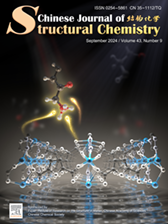
Luminescent coordination polymers with mixed carboxylate and triazole ligands for rapid detection of chloroprene metabolite
Yue Mao, Zhonghang Chen, Tiankai Sun, Wenyue Cui, Peng Cheng, Wei Shi* Submit a Manuscript
Yanrui Liu, Paramaguru Ganesan, Peng Gao*
Chin. J. Struct. Chem., 2024, 43: 100369. DOI: 10.1016/j.cjsc.2024.100369
September 15, 2024
ABSTRACT
Therefore, the new class of d-f transition-based rare earth complexes present a promising strategy for realizing highly efficient OLED devices, particularly suitable for SLWOLEDs compared to moderate progress associated with f-f transition-based complexes. Observing the limited role of host materials in exciton energy transfer and reduced energy transfer from higher energy emitter to low energy emitter at higher doping concentration lays a significant foundation for exploring d-f transition-based rare earth complexes in single color and SLWOLEDs devices. Demonstrating the ambient stability of Eu2+ complexes through delicate ligand engineering strategies will facilitate leveraging the advantages of d-f transitions, such as short excited-state lifetimes and adjustable emission wavelengths, advancing this class of materials as the new generation rare earth complexes for OLED applications.






